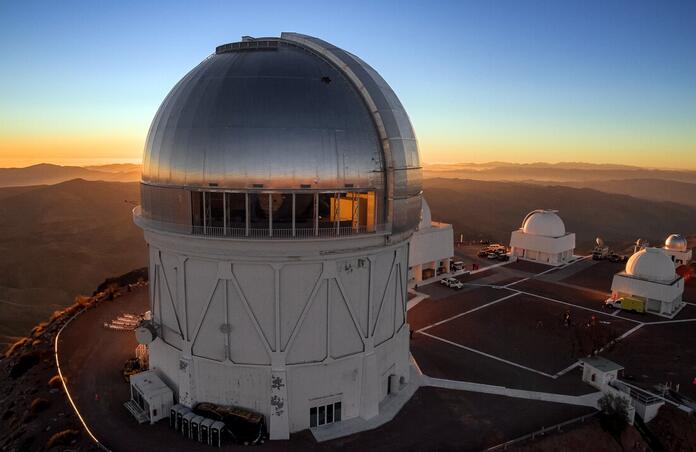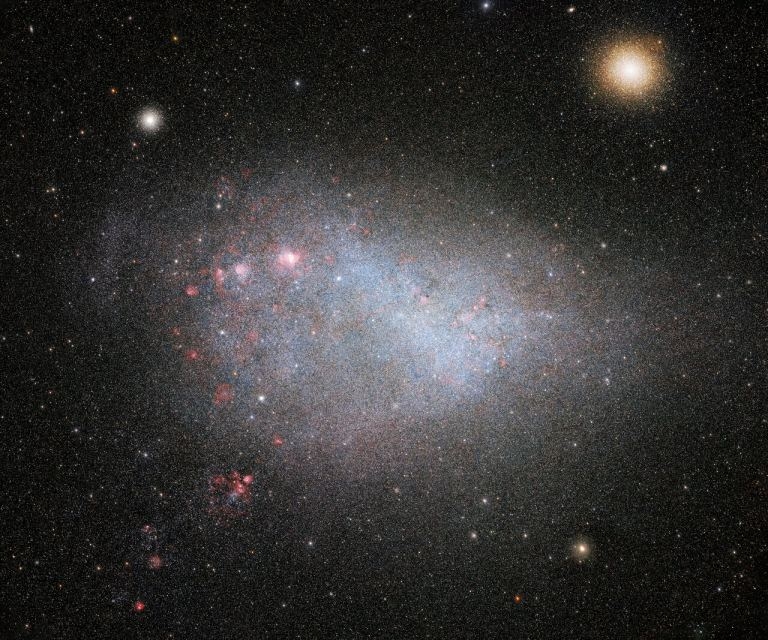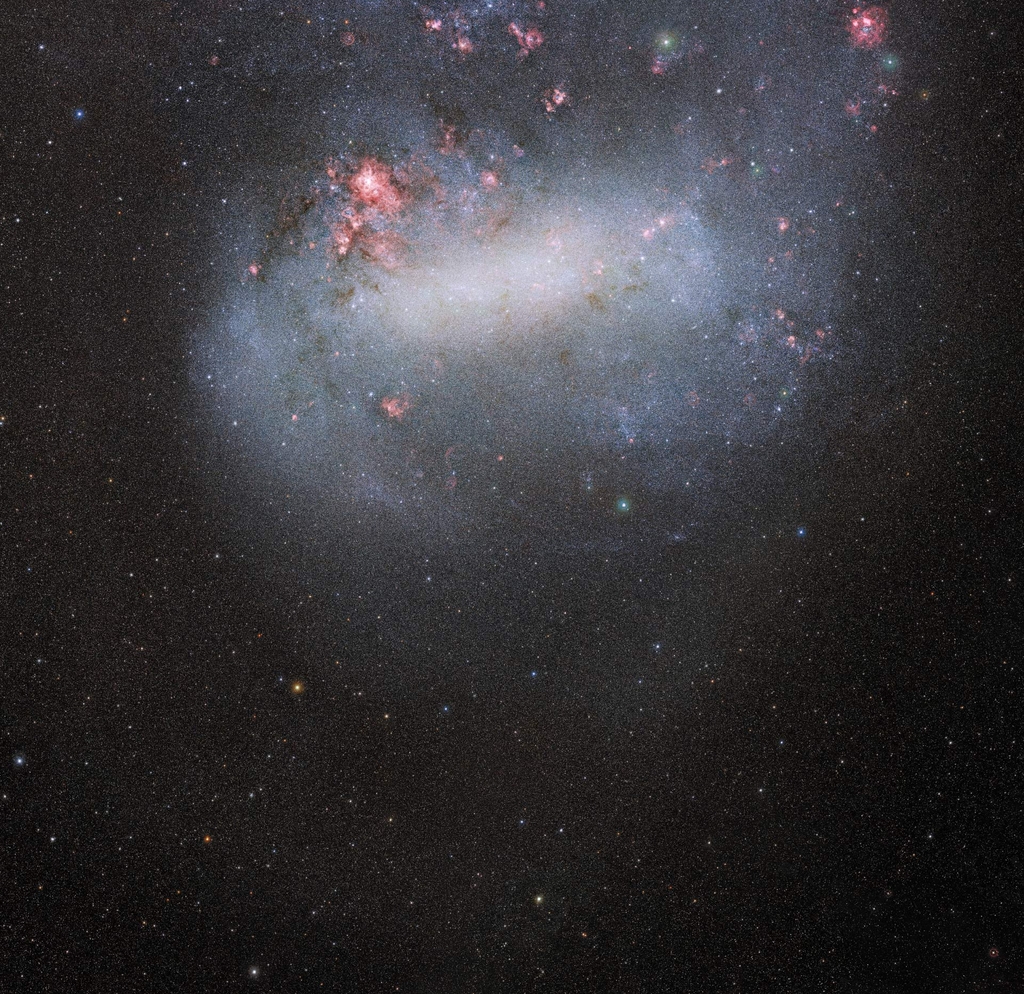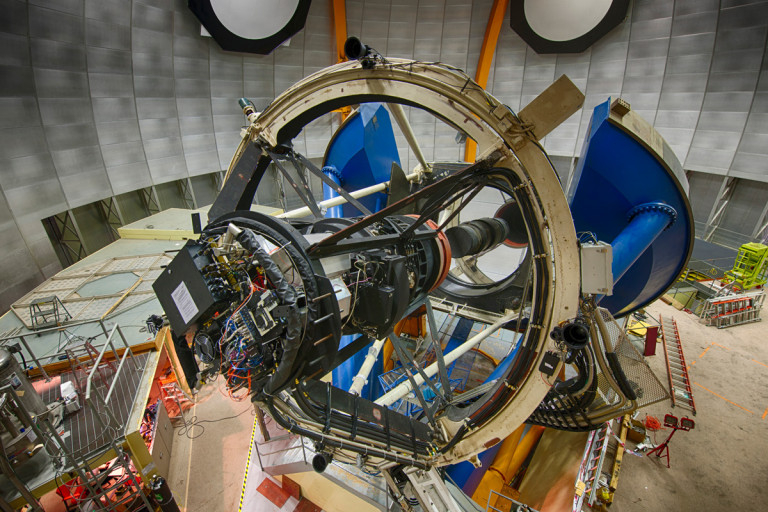Astronomers Capture Deepest Views Ever of Magellanic Clouds

New images of the Small Magellanic Cloud and the Large Magellanic Cloud taken with the Dark Energy Camera (DECam) are the most extensive survey of these neighbouring dwarf galaxies.


The Dark Energy survey, which is what the camera was mainly built for, is a research project that aims at mapping hundreds of millions of galaxies and find patterns in large-scale structures of our Universe in order to understand Dark Energy better – what is known for now is that it’s the force that drives the expansion of our Universe. The DECam camera itself thus has a wide field of view (17 Moons would fit); at the same time, it is sensitive to redshifted light from distant galaxies, which is achieved with five filters. The telescope it is mounted on is the Blanco telescope at the Cerro Tololo Inter-American Observatory, just 100km North of the El Sauce Observatory where the Chilean telescopes you use are located. It has a 4m diameter mirror. Over 8 years after its first light in September 2012, this camera, alongside the other components on the telescope, is still one of the few that can conduct efficient wide- field surveys.

Now to the targets of these news: the Small Magellanic Cloud (SMC) and Large Magellanic Cloud (LMC). They already came up when we talked about the “3D atlas of the galaxy” from the GAIA space telescope, where we saw that there are quite a lot of young stars in those two dwarf galaxies. Actually, they host some of the most active star-forming regions of our close intergalactic neighbourhood. You can see the SMC and the LMC with the naked eye, they were even recorded by our prehistoric ancestors in cave paintings! But the amazing images that make our headline today were obtained after 50 nights of observing with the DECam, mapping those two satellites of the Milky Way unprecedented detail and providing almost 4 billion measurements of 360 million objects.
The data will be used as part of the Survey of the MAgellanic Stellar History (SMASH), which aims at explaining the formation of small galaxies and their interactions with other galaxies. As we’ve seen, the SMC and LMC will eventually be “eaten” by the Milky Way, but there is also evidence for the hypothesis that the two Clouds once collided, leading to the intense star-formation. There are many dwarf galaxies in our Universe, but they are obviously fainter than normal-sized galaxies which makes it difficult to study distant ones, so this data from the Magellanic cloud is a huge milestone in the study of these objects.
Cover Image and Image 1 credit: CTIO / NOIRLab / NSF / AURA / SMASH / D. Nidever, Montana State University / Travis Rector, University of Alaska Anchorage / Mahdi Zamani & Davide de Martin
Image credit:
2- DECam on the Blanco Telescope,The Dark Energy Survey
